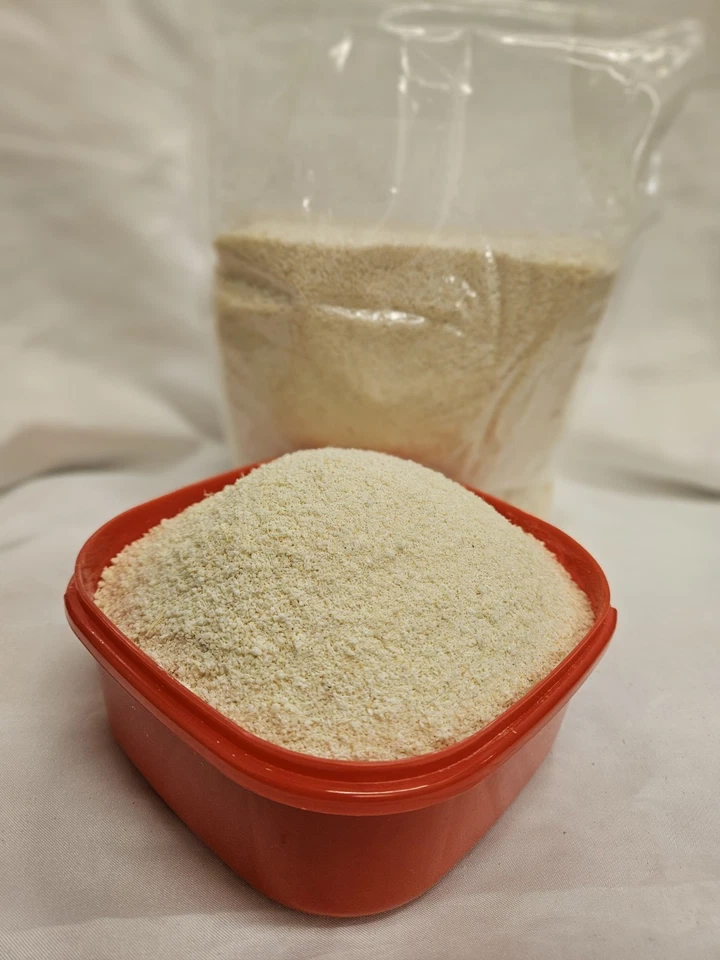For millions of Nigerians, few foods are as familiar—or as controversial—as garri, the starchy, grainy flour derived from cassava tubers. Affordable, versatile, and easy to store, garri is a cornerstone of West African cuisine. But with its popularity comes speculation: Is garri truly healthy? Or does overconsumption come at a hidden cost—perhaps even affecting eyesight?
In this exclusive New Daily Prime report, we explore both the nutritional benefits and health concerns of garri, based on expert interviews, cultural insight, and scientific context.
What is Garri?
Garri is a fermented, grated, and fried flour made from cassava root. Its appeal lies not just in taste but in convenience: it requires little preparation, stores well for up to a year, and can be served either hot (as eba, a staple swallow) or cold (soaked with water, sugar, milk, and groundnuts).
Across West Africa—from Nigeria, Ghana, and Togo to Liberia, Guinea, and Cameroon—garri is consumed daily. In Hausa, the most widely spoken indigenous language in West Africa, garri can refer to flour made from other staples too, such as maize (garin masara), guinea corn (garin dawa), and millet (garin gero). The term reflects its deep cultural integration across ethnic lines and culinary traditions.
Comparable to Brazil’s farinha de mandioca, garri is a foundational food that continues to adapt and evolve with urban diets and modern food systems.
Nutritional Benefits of Garri
Contrary to some misconceptions, garri can be part of a healthy diet—especially when consumed with other nutritious foods.
Dr Gabriel Adelaja, a registered dietitian, explains: “When consumed as part of a balanced diet, garri provides a wide range of nutritional advantages. The problem only arises when it becomes the sole or primary staple.”
Here are some of the health benefits associated with garri:
High Energy Source
Garri is rich in carbohydrates, making it a quick source of energy. It is especially beneficial for people with high physical activity or those who need energy-dense meals.
Low Fat Content – Naturally low in fat, garri is suitable for those managing their fat intake. However, Dr. Gabriel suggests pairing it with healthy fats such as groundnuts or oily fish to improve its nutritional profile.
Gluten-Free – Garri is naturally gluten-free, making it a safe choice for individuals with coeliac disease or gluten intolerance.
Digestive Health Support- Minimally processed garri retains dietary fibre, aiding digestion and preventing constipation. It is particularly helpful for those with sluggish digestion or irregular bowel movements.
Fortification Potential – Commercial garri is often fortified with vitamins, particularly Vitamin A, to support micronutrient deficiencies. Fortified garri is a critical public health intervention in regions where nutritional access is limited.
Promotes Growth – Garri contains folate, a B-vitamin essential for cell regeneration, DNA synthesis, and tissue growth. Folate works alongside other micronutrients to convert carbohydrates into usable energy.
Eye Health – While garri has been accused of impairing vision, the opposite may be true in some cases. Garri contains β-carotene (bakarotennya) and Vitamin A, which support corneal health and help prevent blindness—provided it is well-processed.
Common Misconceptions: Garri and Eye Health
A persistent belief among many Nigerians is that garri causes poor eyesight. But according to Dr Abdulmalik Ibrahim, a general practitioner at Gwarzo General Hospital in Kano, this is largely a matter of quality and quantity.
“Improperly processed garri—especially from bitter cassava—may retain small amounts of cyanide. When consumed in large quantities, this can lead to dizziness, vomiting, or long-term nerve damage.”
Dr. Abdulmalik emphasizes that these symptoms are typically tied to cyanide toxicity, not to garri itself. He adds that safe production—which includes proper soaking, fermenting, and drying—eliminates these risks.
The Risks of Overconsumption
While garri has notable nutritional strengths, excessive consumption, especially without dietary variety, can lead to deficiencies:
• Low Protein Content: Garri does not provide enough protein to sustain muscle health or immune function.
• Micronutrient Deficiency: It lacks iron, zinc, and calcium, which are essential for bone health, immune resilience, and mental clarity.
• Overreliance on Carbohydrates: When garri becomes the dominant part of a person’s diet, it may lead to blood sugar spikes, fatigue, and eventual malnutrition.
For vulnerable populations—such as children, pregnant women, or the elderly—a diet based heavily on garri can undermine long-term health goals.
Cultural Significance vs. Modern Diets
Garri has long been stigmatized as the “poor man’s food,” a view that overlooks its culinary versatility and economic importance. Nutrition experts are now advocating for a reframing of traditional foods like garri as valuable parts of Nigeria’s heritage and sustainable food security solutions.
“Garri is not the enemy. It’s how we prepare and combine it that matters,” says Dr Sulaiman.
By pairing garri with beans, vegetables, eggs, fish, or avocado, households can transform a humble bowl into a balanced, nutrient-dense meal.
Read More:
Lagos made over N3bn from Mushin food hub since Dec 2023 – Commissioner
Study reveals how ultra-processed foods may lead to premature death in UK
FG to launch agribusiness policy to tackle food prices — Shettima
Best Practices for Safe Consumption
To maximise benefits and minimise health risks, consider the following:
• Buy from trusted sources with a reputation for clean and proper processing.
• Avoid relying solely on garri for your carbohydrate intake.
• Pair with protein and vitamin-rich sides (beans, spinach, mackerel).
• Consume in moderation, particularly if pregnant or managing a health condition.
• Seek fortified garri when possible, especially for children.
Final Word: A Staple Worth Celebrating—With Caution
Garri remains a deeply rooted element of West African diets, offering affordability, energy, and cultural continuity. It’s neither a superfood nor a danger on its own—it’s how we process, pair, and portion it that determines its impact on health. With balanced meals, proper preparation, and informed consumption, garri can continue to nourish families across Nigeria for generations to come—without compromising health.



